Measures of student learning
Measures of student learning can be either direct or indirect. Details and examples of both types of measures are given in turn given below. When including measures of student learning in, for example, a teaching portfolio or an appointment/promotion case, candidates should include an analysis of the approach taken and results achieved, as well as a self-reflection on how the outcomes have informed their educational approach.
Direct measures of student learning
Direct measures of student learning capture the knowledge/skills/attitudes of the student cohort, enabling evaluation of student performance, either against a defined benchmark or through changes over time. While ‘direct measures’ can provide robust evidence of teaching achievement within particular courses or programmes, they are typically resource intensive, requiring time and expertise to design and collect.
Indirect measures of student learning
While direct measures provide explicit evidence of student learning, indirect measures provide evidence that suggests or implies that student learning has taken place. Typically relating to either institutional indicators of student progression or to the perspectives of students and other stakeholders, most indirect measures are relatively straightforward to collect in a standardised form that can enable comparisons between cohorts.
Direct measures of student learning
Direct measures of student learning capture the knowledge/skills/attitudes of the student cohort, enabling evaluation of student performance, either against a defined benchmark or through changes over time.
While ‘direct measures’ can provide robust evidence of teaching achievement within particular courses or programmes, they are typically resource intensive, requiring time and expertise to design and collect. Such measures are therefore not routinely used within promotion cases. Where included, however, it is important for candidates to contextualise the data by describing the design and goals of the activity. As summarised below, direct measures of student learning that could be presented as part of an academic promotion case tend to fall into two categories: (i) direct measures of learning over time; and (ii) direct measures of learning at a single point in time.
Measures of learning over time
Measures which assess learning over time, often using before/after testing of student knowledge/abilities
The direct measures of learning over time likely to be most appropriate for inclusion in a promotion case are those involving pre/post testing of students, for example, on the basis of their conceptual understanding. One well-documented example of such pre/post testing is from the Massachusetts Institute of Technology (MIT), where a new active learning approach was adopted within an electromagnetics course with the aim of improving students’ conceptual understanding and reducing failure rates. Conceptual questions from standardised tests were administered to students both before and after the new course, and the results were compared to control group data from students studying under the previous, more traditional, course delivery style. The survey outcomes demonstrated that the new course delivered significantly improved conceptual understanding among students (Dori and Belcher 2005). The survey questionnaire used in this example can be accessed from Dori et al. (2007).
Concept tests, such as the Force Concept Inventory (Hestenes and Halloun, 1995) – available from Mazur (1997) – are widely used in engineering and physics schools across the world to evaluate students’ conceptual understanding.
An alternative direct measure of student learning is the student learning journal, in which students are asked to reflect on the course and their learning on a weekly basis. An approach to designing and evaluating student learning journals is provided in Shiel and Jones (2003).
Measures of learning at a single point in time

- student performance in institutional examinations and assignments can be used, in particular, to demonstrate the positive impact of pedagogical or curricular change as part of a promotion case;
- products/outputs of a course or programme delivered by students, such as final-year projects, conceptual maps or oral exams;
- student performance in standardised tests, capturing both generic learning outcomes through tools such as the Collegiate Learning Assessment (Klein et al., 2007) or capturing discipline-specific capabilities through tools such as AHELO (OECD, 2009). Although such tools are primarily designed for comparisons between institutions and countries, such data could also be disaggregated by programme to support a candidate’s case for promotion.

A wide range of evidence sources was used to demonstrate Dr Forest’s institutional impact and influence in teaching and learning, including:
- Professional activities: the educational portion of the promotion case centred on a description of three activities: (i) the co-foundation of the ‘InVenture Prize’, a university invention competition, (ii) the establishment of the ‘Invention Studio’, an open-access space for student creativity, innovation and design, and (iii) the redesign of an engineering capstone design course.
- Peer assessments: including national press coverage of the educational activities developed by Dr Forest, a peer-reviewed pedagogical publication and details of the funds raised for the establishment of the ‘Invention Studio’.
- Indirect measures of student learning: including estimates of the number of companies founded by students engaged in the entrepreneurial and innovation activities established by Dr Forest.
- Direct measures of student learning: including an evaluation of the quality of student projects from the multidisciplinary final year design course established by Dr Forest, as described below.
Indirect measures of student learning
Indirect measures of student learning are evidence that has been shown to correlate with student learning, while not measuring it directly.
While direct measures provide explicit evidence of student learning, indirect measures provide evidence that suggests or implies that student learning has taken place. Most indirect measures capture evidence at a single point in time and therefore do not necessarily offer insight into the ‘value added’ by the education or intervention. However, they have the advantage of being relatively straightforward to collect in a standardised form that can enable comparisons across and between cohorts.
Indirect measures typically relate either to institutional measures of student progression (e.g. pass rates, attrition rates) or to the perspectives of students and other stakeholders (e.g. unsolicited student feedback, student evaluation scores, employer feedback). Examples of indirect measures of students learning are listed below. Where possible, links to relevant measurement tools are provided.
- Alternative student
evaluation surveys - Self-reported student
learning gains - Student feedback and
student achievements - Measures of student
progression - Other indirect
measures
Alternative student evaluation surveys
Institutional student evaluation questionnaires are widely used by universities across the world as key indicators of academic teaching achievement. However, many such questionnaires have been designed ‘in house’ and some are reported to “lack any evidence of reliability or validity, include variables known not to be linked to student performance, and do not distinguish well or consistently between teachers and courses” (Gibbs, 2014). Summarised below are details of two alternative and highly-regarded survey instruments that could be used by candidates to collect student evaluations in relation to a specific programme, course or activity:
- Student Evaluation of Educational Quality (SEEQ) captures student evaluations of 35 aspects of effective teaching in relation to their course or teacher. A version of the SEEQ questionnaire is reproduced in the appendices of Nash (2012).
- Student Assessment of Learning Gains (SALG) is a survey tool which, according to its authors (Seymour et al., 2000), “avoids critiques of the teacher, the teacher’s performance, and of teaching methods that are unrelated to student estimates of what they have gained from them”, focusing instead on “the learning gains that students perceive they have made” in terms of the learning outcomes of the course or activity.
Self-reported student learning gains
Self-efficacy, or a student’s self-belief in their own abilities, has been shown to be a strong predictor of student learning and motivation (Zimmerman, 2000). Pre/post survey data that demonstrate improvements in student self-efficacy can be used within a promotion case to demonstrate, for example, the impact of a course or new pedagogy. A generic self-efficacy questionnaire (the Motivated Strategies for Learning Questionnaire) is available from Pintrich and DeGroot (1990).
Targeted self-efficacy questionnaires are also available which often focus on specific skills and attitudes, such as entrepreneurship (Lucas, 2014), or within specific disciplines, such as engineering design (Carberry et al., 2010).
Student feedback and student achievements
As a complement to student evaluation survey data, solicited or unsolicited feedback from students/graduates – for example an email from a student describing the positive impact on their learning, progress and/or engagement made by the candidate – can be used to support the teaching element of promotion cases.
Indirect evidence of student learning can also include the achievements of students and graduates. Although, in most cases, it is very difficult to attribute such achievements to the learning opportunities and/or support provided by a particular academic, some exceptions may exist. For example, a promotion candidate could include details of the number of student teams from an entrepreneurship course who have since established a successful startup business.
Measures of student progression and learning, typically collected by the university

- student attrition/retention rates
- student satisfaction in relation to specific courses, collected via survey and written feedback
- pass rates and degree classifications
- employer assessment of graduate capabilities, collected via survey
- post-graduation employment rates and salary scales
- graduate feedback about their educational experience, collected via survey

- peer-reviewed evidence (such as institutional and national teaching awards, peer-reviewed pedagogical articles and the inclusion of his teaching activities in published case studies of good practice) as indicators of scholarly teaching and pedagogical influence beyond his institution.
- details of a major curricular innovation with associated improvements in student progression following its implementation, as indirect measures of student learning, details for which are given below.
Using both survey and focus-group data, he conducted (i) an analysis of the design and delivery of Engineering Teams, identifying a number of constraints to the scheme that were subsequently improved upon during the years that followed, and (ii) a review of the impact of Engineering Teams on the student cohort. A major indicator of the impact of Engineering Teams, as highlighted in the promotion case, was the significant improvement in student progression rates following its introduction: from 83% to 93%. As Dr Joyce noted, “Going from a situation where we were ‘losing’ almost 1 in 5 students to one in which we were only ‘losing’ 1 in 11 conveyed a very strong message I thought, particularly when there was no additional financial expenditure by the School. These numbers were also backed up by positive student feedback which we gathered over the first year and at the beginning of second year”.
Other indirect measures relating to programme and/or institutional impact
Other ‘indirect measures’ can be used to demonstrate both programme- and institutional-level impact in teaching and learning. Examples could include:
- Assessments by industry partners and/or graduate employers, such as (i) surveys capturing the perceived capabilities of graduates from particular programmes/universities compared to peer institutions or previous generations of graduates, or (ii) qualitative assessments of student performance on industry-linked curricular experiences or placements;
- Student engagement data, such as that captured through the US National Survey of Student Engagement.
Career Framework for University Teaching, 2024